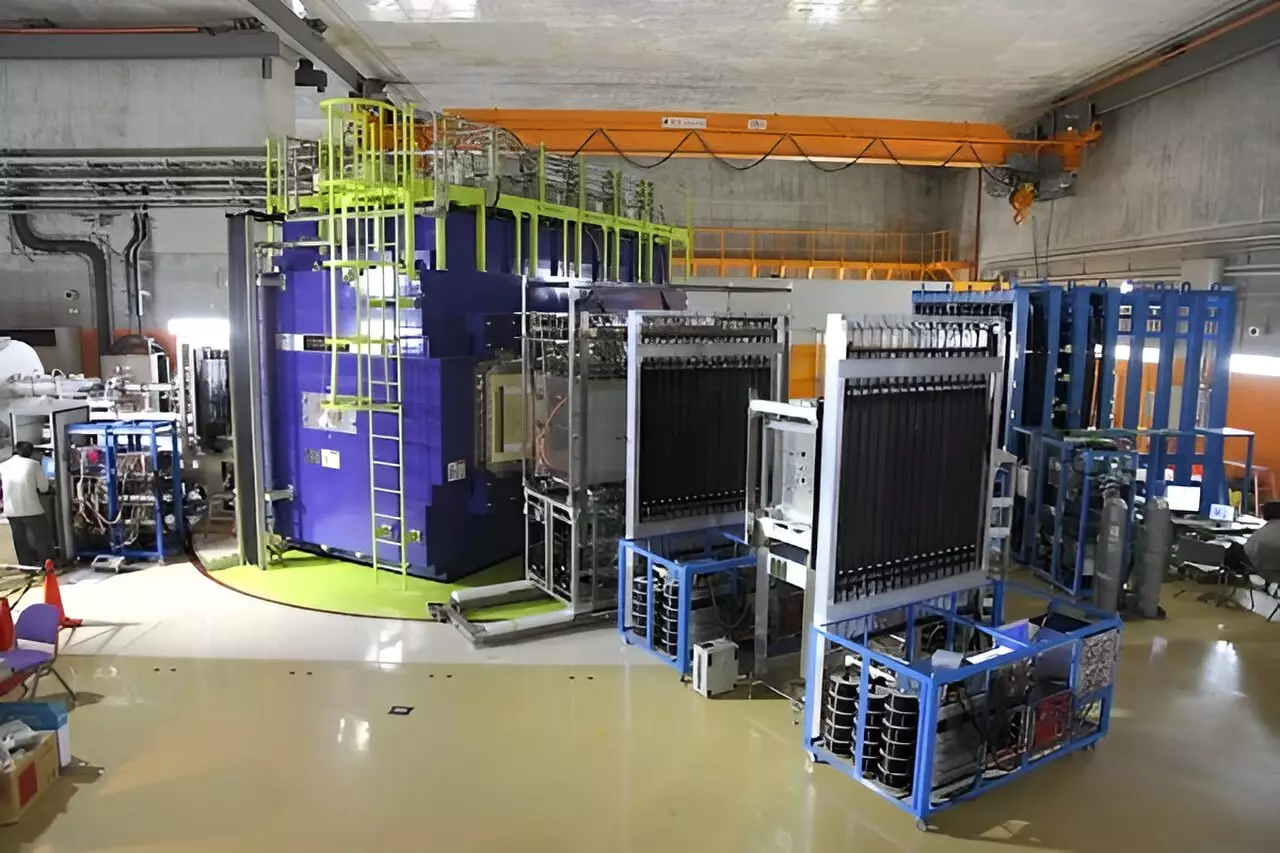Recent advancements in nuclear physics have unveiled fascinating insights into the behavior of isotopes at the fringes of stability. Researchers at RIKEN’s RI Beam Factory in Japan recently reported the detection of an elusive fluorine isotope, designated as 30F. This discovery has significant implications for our understanding of nuclear structures, particularly their phases and behaviors under extreme conditions. With the collaborative efforts of the SAMURAI21-NeuLAND Collaboration, a diverse group of physicists from institutions across Japan and Europe, this study stands to enhance our comprehension of the nuclear landscape, particularly in the realm of neutron-rich isotopes.
The detection of 30F serves as a crucial step in probing the enigmatic world of nuclear physics, shedding light on previously unexplored isotopes and their unique properties. By studying this isotope, researchers aim to contribute to the ongoing discourse surrounding nuclear magic numbers—specific numbers of protons and neutrons that confer enhanced stability to atomic nuclei. Understanding the deviations in magic numbers in isotopes like 30F could provide pivotal insights into the fundamental workings of atomic nuclei.
The SAMURAI20-NeuLAND Collaboration has convened a dedicated team of over 80 researchers from various institutions worldwide, pooling their expertise to conduct this groundbreaking study. Central to their investigation was the exploration of the neutron separation energy and spectroscopy of the newly identified isotope. Their findings hint at the existence of a superfluid state in closely related isotopes, specifically 29F and 28O, further enriching the narrative of nuclear behavior under extreme conditions.
Julian Kahlbow, the lead author of the study, articulated the significance of this inquiry: “We are charting the neutron-rich territories of isotopes, seeking to determine how nuclear structure holds up under extraordinary conditions.” This collaborative effort underscores the necessity of pooling resources and knowledge in nuclear physics, where interdisciplinary research can yield innovative breakthroughs.
Understanding 30F: A Challenge in Measurement
The isotope 30F is particularly challenging to study due to its ephemeral nature—it exists for a mere 10-20 seconds before decaying. This fleeting existence poses substantial obstacles for direct measurement. However, the researchers ingeniously bypassed these limitations by examining decay products, specifically through the interaction of the isotope 31Ne, which was produced using the BigRIPS fragment separator at RIKEN. By directing this ion beam at a liquid hydrogen target, the experimental setup allowed for the knock-out of a proton, thereby facilitating the generation of 30F.
Through sophisticated detection techniques and measurement setups, including the use of a 4-ton neutron detector, NeuLAND, shipped specially from Germany for this project, the researchers could collect pertinent measurements essential for reconstructing data about 30F. Kahlbow and his team successfully analyzed the momentum data of detected neutrons and isotopes to reconstruct the energy spectrum of 30F, leading to the identification of a ground-state resonance and mass.
Unraveling the Mysteries of Superfluidity
Perhaps one of the most exciting implications of the study is the suggestion that isotopes like 28O and 29F may exist in a superfluid state of nuclear matter. Superfluidity is a phase of matter characterized by the absence of viscosity, allowing a liquid to flow without dissipating energy. Kahlbow posited that the presence of excess neutrons could lead to pairing behaviors and scattering phenomena that align with the characteristics typical of Bose-Einstein condensates observed in other states of matter.
This assertion marks a significant contribution to the understanding of superfluidity in weakly bound systems—a realm where traditional nuclear theories might not hold. If corroborated by future research, these insights could usher in a new understanding of pairing interactions across the isotopic spectrum and their implications for astrophysical phenomena like neutron stars.
The findings presented by the SAMURAI21-NeuLAND Collaboration hold immense potential for future exploratory studies. With the possibility of 29F and 31F being halo nuclei—where neutron configurations exist far from the nucleon core—the stage is set for further investigations into their behaviors and relationships along the fluorine isotopic chain. Kahlbow remarked, “The entire region of the chart of nuclei at the edge of existence remains largely uncharted territory, and advances in accelerator technology offer an opportunity to reach these elusive isotopes.”
The ongoing inquiries into the characteristics and behaviors of rare isotopes like 30F will play a crucial role in refining our understanding of nuclear physics and its applications in both fundamental and applied domains. Moreover, this research could lead to surprising discoveries that advance theoretical frameworks and modeling efforts, particularly in the context of neutron-rich environments and cosmic structures.
As scientists continue their collective efforts, the implications of their findings will likely resonate across the fields of nuclear and astrophysics, potentially transforming our understanding of the universe at its most fundamental level.

